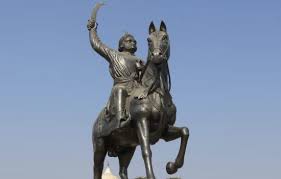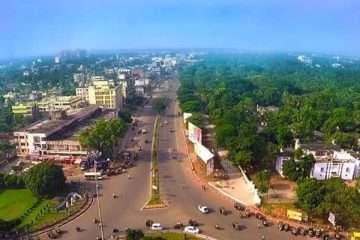Maharaja Surajmal: The Visionary Ruler of Bharatpur

Introduction
Maharaja Surajmal, the illustrious ruler of the Jat Kingdom of Bharatpur, is a prominent historical figure whose contributions to the socio-political landscape of northern India are deeply significant. He reigned during the 18th century and is celebrated for his valiance, administrative acumen, and efforts toward the unification of the Jat clans. Understanding his life and legacy is pivotal not only for historical studies but also for appreciating the cultural fabric of modern-day Rajasthan.
Early Life and Ascendancy
Maharaja Surajmal was born in 1707 in a time characterized by political upheaval and the decline of Mughal authority. He emerged as a leader among the Jat community, which was facing oppression from the Mughals. His astute political maneuvers enabled him to consolidate power and establish Bharatpur as an essential center of Jat sovereignty.
Reign and Achievements
Surajmal ascended to the throne in 1756, building on his father’s legacy by expanding the kingdom’s territories through strategic alliances and military campaigns. His notable achievement includes the construction of the Lohagarh Fort in Bharatpur, which is famous for its robust structure that withstood several sieges, including that from the British. In 1763, Surajmal successfully fought against the Marathas, proving his military prowess and cementing his rule as a formidable leader. He also played a crucial role in the governance by introducing various reforms aimed at agrarian development and promoting trade.
Legacy and Cultural Impact
The true legacy of Maharaja Surajmal lies in his vision for a prosperous and self-sufficient state. He encouraged education, arts, and architecture in his realm, leading to a rich cultural heritage that is celebrated in Rajasthan today. The annual Surajmal Jayanti is commemorated with immense fervor, reflecting his lasting impact on the people. Furthermore, his efforts toward the welfare of farmers and emphasis on agrarian policies earned him the affection of the common folk, distinguishing him as a ruler who prioritized his subjects’ wellbeing.
Conclusion
Maharaja Surajmal’s reign is a testament to the resilience and ingenuity of the Jat community in Rajasthan. His contributions remain relevant as they exemplify leadership marked by bravery, wisdom, and a commitment to the people. Scholars and enthusiasts of Indian history continue to delve into his life, ensuring that the narrative of Maharaja Surajmal is preserved and honored. As India moves forward, the lessons from his governance inspire contemporary leaders and citizens in their pursuit of social equity and cultural richness.









